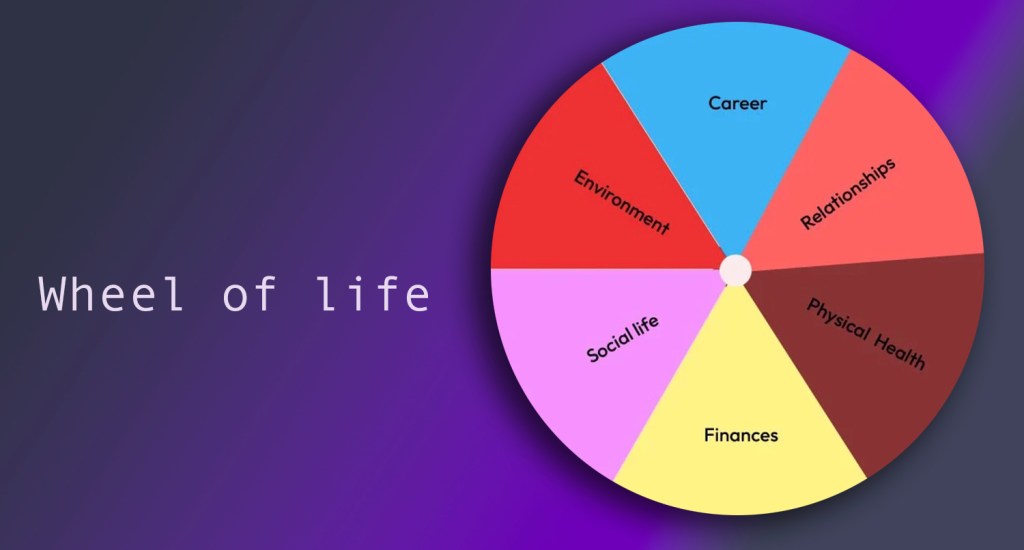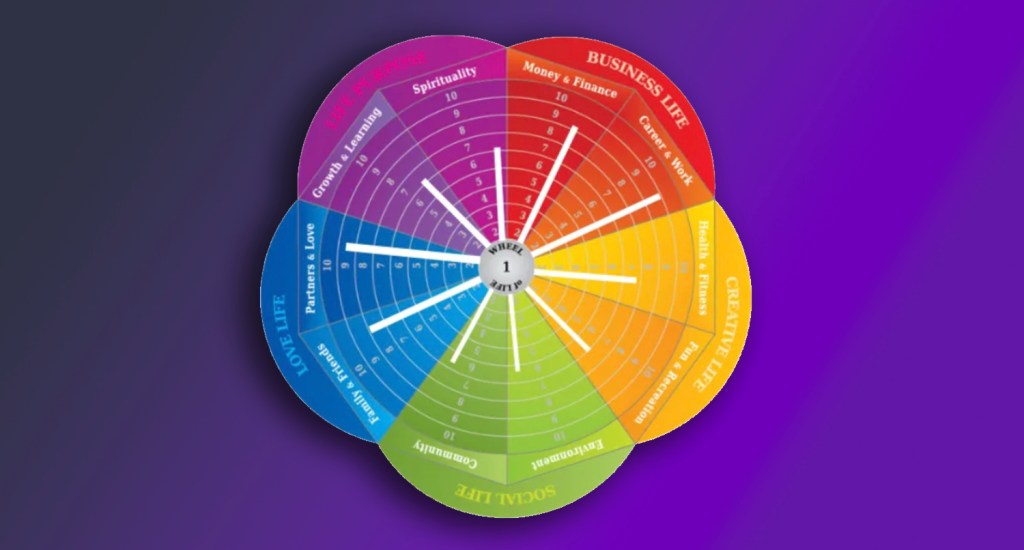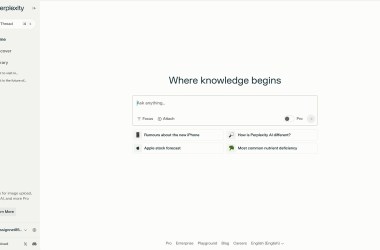Updated: Jul 02, 2024 By: Marios

Ever wondered why life seems like an endless cycle of ups and downs? Well, you're not alone. The concept of the “wheel of life” is an ancient philosophical idea that offers a fascinating perspective on this. It's a tool that's been used for centuries to understand and improve our lives.
In this digital age, the wheel of life might sound like an obsolete concept, but it's more relevant than ever. It can help us balance our personal and professional lives, guide our decisions, and even lead us to self-discovery. So, let's dive deep into this concept and find out how it can help us navigate life's choppy waters.
Understanding the Wheel of Life
Beyond its philosophical and spiritual roots, the wheel of life operates as a practical tool for modern-day self-improvement. With that in mind, it's critical to delve into its historical origins, followed by the concept's evolution through variations and styles.
Origins and Historical Significance
The wheel of life's foundation stems from ancient Indian Buddhism, highlighting numerous realms of existence and cyclical life patterns. This imagery, reflecting the cycle of birth, life, death, and reincarnation, serves as a reminder that life's events are both periodical and repetitive.
Historically, the wheel of life held tremendous significance and posed as a mirror to the human condition, underlining the effects of actions and consequences. Comprehending the wheel's symbology can enrich lives, supplementing a wider perspective and a deeper understanding of life.
Variations and Styles
Over the centuries, countless variations and styles of the wheel of life emerged. Although the core philosophy remains constant, these variations render the concept even more accessible to diverse cultures, philosophies, and worldviews.
For instance, some portray the wheel in relation to one's career, health, relationships, personal growth, and more. Others incorporate mindfulness and the ongoing journey of self-improvement. Understanding these variations allows individuals to tailor the wheel of life to their unique life experiences and aspirations, leveraging this ancient philosophy for robust, balanced living in the modern world.
The Importance of the Wheel of Life in Personal Development

The Wheel of Life offers vital insights that propel personal development. Becoming adept in its use provides a roadmap for balanced living, energizing your self-improvement journey.
Assessing Life Balance
A running theme in the Wheel of Life is the pursuit of balance. This tool reflects eight dimensions of life, represented as spokes in a wheel. These dimensions include health, family, relationships, career, personal growth, recreation, money, and physical environment. For a smooth cruise through life, all these sectors need proper attention. Use the Wheel of Life to gauge where you're thriving and areas you're neglecting. For instance, excelling in a career yet failing in personal relationships would show a lopsided wheel, indicating imbalance.
Identifying Areas for Improvement
The Wheel of Life isn't just a mirror reflecting your current state. It's a compass, directing you towards areas needing upliftment. Those areas in your life scoring lower on the Wheel merit special attention. You pinpoint where change is vital, then set relevant goals. Suppose your health sector scores low. The first target could be introducing a regular exercise routine. This process of recognizing weaker areas, setting actionable objectives, and tracking progress amplifies self-improvement, underscoring the value of the Wheel of Life in personal development.
How to Use the Wheel of Life
Utilizing the Wheel of Life enables self-assessment across various life dimensions. It unveils imbalances, spotlighting areas that crave attention. This profound tool becomes instrumental when chosen categories reflect persona, filling out breaks down reality, interpreting results shows the way forward, and setting goals promotes actionable steps.
Choosing Your Categories
Primarily, categorization marks the essence. It's crucial to select areas that aptly represent individual lifestyles. Eight sections typically include career, finances, health, friends & family, romance, personal growth, fun & recreation, and physical environment. In case of special requirements, sections like spirituality or community service could be added. Choose wisely, because an irrelevant section might distort the balance in your Wheel of Life.
Filling Out the Wheel
With categories chosen, one proceeds to fill the Wheel. Each segment ranges from 0 to 10, where 0 suggests dissatisfaction while 10 signifies complete harmony. Rate honestly, from the heart, avoiding contrasts with others' ratings. Making pie-charts vividly displays satisfaction levels across diverse sections. However, be prepared and open to surprising revelations that the Wheel brings in.
Interpreting the Results
Interpreting the results forms an enlightening experience. A perfect circle indicates a balanced lifestyle. However, jagged circles reflect disparities or areas demanding more attention or efforts. A low score never implies failure, but rather signals an opportunity to improve. Plunge into self-reflection, dig deeper to uncover underlying reasons. Remember, scores aim to illuminate rather than to judge.
Setting Actionable Goals
Setting actionable goals lies at the heart of the Wheel's effectiveness. Identify, strip down issues, set feasible adjustments. Keep the wheel turning towards balance by picking up one section at a time, focusing and placing consistent efforts. Setting SMART (Specific, Measurable, Attainable, Relevant, and Time-bound) goals optimizes transformation. And gradually, as one spins the Wheel, life rolls towards harmony and fulfilment.
Applications of the Wheel of Life in Coaching
In coaching, applications of the Wheel of Life span a wide range, serving as a versatile tool for both self-discovery and guiding others. Let's delve into the specifics of these applications, focusing primarily on techniques and addressing common challenges.
Techniques for Coaches
Harnessing the Wheel of Life in a coaching scenario entails three primary techniques: identification, assessment, and progression. First, it's essential to identify the relevant aspects of the client's life that fit into the model. Coaches often choose dimensions such as financial stability, career satisfaction, social relationships, and other significant life areas.
Following identification, the coach performs an assessment. Here, each life aspect gets a score from the client, indicating their current satisfaction level. For instance, a client may rate their career satisfaction as 7 out of 10, providing a quantifiable measure to work with.
Lastly comes progression. After collating a complete picture of the client’s life through the wheel, coaches draft personalized progress plans. These plans account for the weaker areas, strengthening them and thereby improving the overall balance and harmony in the client's life.
Common Challenges and Solutions
Despite being a highly effective coaching tool, using the Wheel of Life is not without challenges. Common issues include a client's difficulty in rating life aspects, lack of clarity about their true priorities, or an inability to make meaningful change.
However, these challenges present opportunities for solutions. For example, when a client experiences difficulty in rating their life aspects, coaches can employ techniques such as guided visualization to help the client envisage their ideal state in each area. Similarly, clients unclear about their priorities might benefit from aspects-detailed discussion assigned higher priorities and vice versa.
For clients resistant to meaningful change, gradual goal-setting is an often-used strategy. Rather than aiming for immediate, large-scale shifts, smaller, more achievable goals can create a positive momentum that ultimately leads to substantial life improvements.
Conclusion
So, there you have it. The Wheel of Life isn't just an ancient Buddhist concept, but a practical tool for achieving balance and fulfillment in modern life. It's a roadmap that helps us pinpoint where we're thriving and where we need to focus more energy. Whether you're a coach looking to guide others or an individual seeking personal growth, the Wheel of Life can offer invaluable insights.
Remember, it's not about achieving perfection in every life aspect but about understanding your priorities and striving for a harmonious balance. Challenges may arise, but with tools like guided visualization and gradual goal-setting, you'll be well-equipped to navigate your journey. Embrace the Wheel of Life, and you'll be one step closer to a more balanced, fulfilling life.



